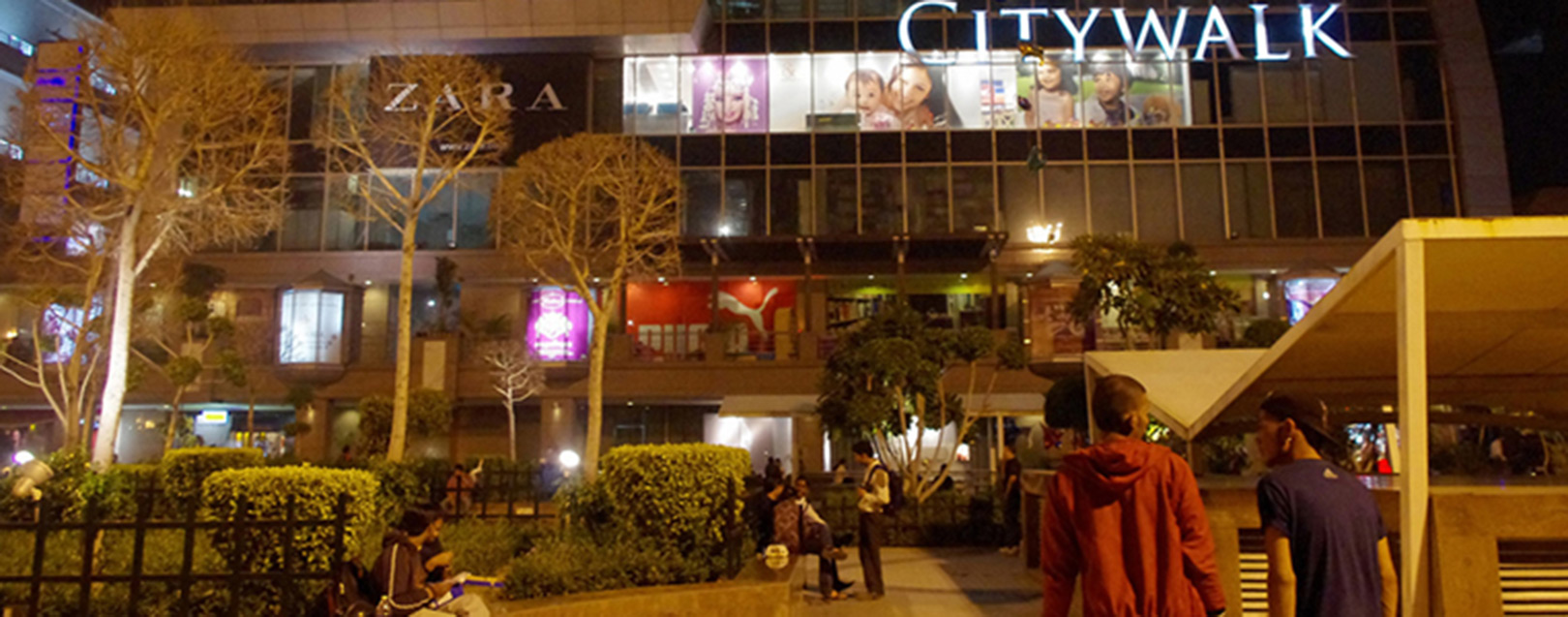
Select Citywalk mall in New Delhi is a favourite of the middle-class and is a monument of India’s retail sector
Although valued at over $500 billion, Indian retail is still evolving
The Dollar Business Bureau | @TheDollarBiz
The retail landscape of India has undergone a major transformation over the last few years, enhancing the overall consumer experience to varying degrees. The Indian retail market is pegged at $500 billion and holds a niche slot as one of the five major retail markets in the world. It is also the fastest growing, expected to scale up to $1.3 trillion by 2020.
Retailing in India is one of the major revenue earners for the economy, accounting for approximately 15% of the country’s GDP. The market for retail in India is, undoubtedly, uniquely complex in terms of the wide geographical spread and distinct consumer preferences that vary vastly in each region. Such diversity lends itself to a need for localisation within each of the geographic zones. Moreover, in the present scenario, where unorganised retail formats such as traditional family run stores and small shops constitute a majority of the market (at over 90%), the challenges posed can be quite daunting. Over 30% of food staples and perishable goods produced in India get spoilt due to infrastructural bottlenecks. In addition to this, small retail outlets also prevent proper hygienic storage and movement of goods from farmers to consumers.
India is one of the fastest growing retail markets, expected to scale up to $1.3 trillion by 2020
Far and wide
Moreover, a geographically dispersed population, complex distribution networks, low internet penetration and existence of counterfeit goods only compound the woes. The other side of the spectrum – organised retail – which constitutes only 8% of the market, has a number of factors such as rapid urbanisation, a young population, rising incomes and increasing brand consciousness, helping its growth. The advantages of organised retail formats that include hypermarkets, large retail chains and privately owned retail businesses are fairly obvious.
Availability of better quality products, an improved supply chain, a one stop shop for varied choices of brands and products are some of the benefits that accrue to the consumer. Such retailers are also considered more efficient and apt to cater to the diversified nature of consumer demands, besides doling out employment options for many in logistics, store management and quality checking. But this is not to say that the unorganised sector has no advantages of its own. Proximity to consumers, credit sales, bargaining and convenient home delivery options act as a win-win for this segment of retail. Small shopkeepers, often, maintain a good equation with their buyers, thus converting them into loyal customers over time. By the same logic, organised retail has its share of disadvantages which include a lack of close interaction with customers and a long wait time for billing.
At present, India is at the cross roads as far as the retail sector is concerned. Several market economies have gone ahead and reaped the benefits of modern retail. India is, however, a late comer to organised retail expansion and the picture is not clear as to what the future holds. The jury is still out if organised retail will ever be able to overcome the unorganised retail sector in India.
The current sign of reforms, however, have heralded a wave of optimism for the retail industry in India. In 2006, 51% Foreign Direct Investment (FDI) was allowed in single brand retailing, although with prior approval from the government. In December 2011, the government fully opened up FDI in single brand retail which encouraged IKEA to enter India. For the much debated and politically sensitive multi-brand retail, partial approval of 51% FDI was proposed in September 2012, which got parliament approval in December 2012. However, FDI policy was modified in April 2013.
Some of the conditions laid down in the policy are:
FDI in single brand retail was fully opened up in 2011 followed by 51% FDI in multi-brand retail
A large number of global retailers have shown interest to enter the Indian market. Tesco has signed an agreement with Trent of the Tata Group. H & H and IKEA, GAP, French apparel retailer Calio, Japanese fashion brand UNIQLO are also in various stages of entry. It will require an additional 6-10 years for the market to mature. Even in China, international giants like Walmart, Tesco, Carrefour, ANCHAN and COSTCO had a long settling-in period despite streamlined approval system, government facilitation and shorter construction periods. Despite all of this, there is little doubt that the Indian retail story is evolving at a frantic pace. And with favourable government policies and emerging technologies already in place, the future looks promising enough for this sunrise sector in times to come.
Get the latest resources, news and more...
By clicking "sign up" you agree to receive emails from The Dollar Business and accept our web terms of use and privacy and cookie policy.
Copyright @2026 The Dollar Business. All rights reserved.
Your Cookie Controls: This site uses cookies to improve user experience, and may offer tailored advertising and enable social media sharing. Wherever needed by applicable law, we will obtain your consent before we place any cookies on your device that are not strictly necessary for the functioning of our website. By clicking "Accept All Cookies", you agree to our use of cookies and acknowledge that you have read this website's updated Terms & Conditions, Disclaimer, Privacy and other policies, and agree to all of them.

